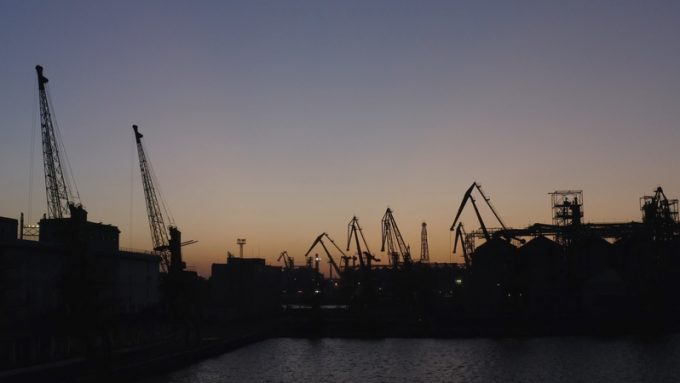Maersk Frankfurt heads for open water as container fire subsides
Maersk Frankfurt, the newbuild box ship that suffered a possible electrical fault and subsequent container ...
TFII: SOLID AS USUALMAERSK: WEAKENINGF: FALLING OFF A CLIFFAAPL: 'BOTTLENECK IN MAINLAND CHINA'AAPL: CHINA TRENDSDHL: GROWTH CAPEXR: ANOTHER SOLID DELIVERYMFT: HERE COMES THE FALLDSV: LOOK AT SCHENKER PERFORMANCEUPS: A WAVE OF DOWNGRADES DSV: BARGAIN BINKNX: EARNINGS OUTODFL: RISING AND FALLING AND THEN RISING
TFII: SOLID AS USUALMAERSK: WEAKENINGF: FALLING OFF A CLIFFAAPL: 'BOTTLENECK IN MAINLAND CHINA'AAPL: CHINA TRENDSDHL: GROWTH CAPEXR: ANOTHER SOLID DELIVERYMFT: HERE COMES THE FALLDSV: LOOK AT SCHENKER PERFORMANCEUPS: A WAVE OF DOWNGRADES DSV: BARGAIN BINKNX: EARNINGS OUTODFL: RISING AND FALLING AND THEN RISING

Ukraine’s importers are struggling to deal with high storage costs and delivery delays, as logistics companies remain fearful of the documentation required and losing containers.
Before Russia invaded in February 2022, annual container cargo traffic in Ukraine exceeded 1m teu, of which half was imported, and the port of Odessa accounted for 65% of this.
But the war put unprecedented stress on the country’s supply chains, and in particular imports, as the closure of seaports meant carriers had to redirect cargo to other countries, while new overland routes were found. And global container lines were forced to revise their Ukrainian operations.
Most containers to Ukraine were redirected to ports in neighbouring countries, like Constanta (Romania), Piraeus (Greece) and Tripoli (Lebanon), and to Gdansk and Gdynia in Poland, for onward carriage by rail. That, however, resulted in a shortage of rail capacity, besides the challenges of a different rail gauge between Europe and Ukraine. Some freight was switched, as a result, to road.
Now, despite terminals in European ports still being overloaded with Ukranian cargo, carriers are in no hurry to deliver it, as rules and operating conditions have changed significantly. Indeed, many container lines won’t allow their containers to be delivered to Ukraine, fearing that they will simply not come back.
As a result, importers must break up containers, reload the cargo onto land transport and then import it to Ukraine, leading to serious delays in customs clearance and higher storage rates.
A Maersk spokesperson told The Loadstar it had continued to operate daily for Ukraine since the war started and added: “Of course, it is by far not ‘business as usual’ if a country is being attacked. We had to review the cargo flows in Ukraine and give priority to humanitarian aid cargo after the Russian aggression started.
“We tried different solutions to assist our customers, and our strong experience in integrated logistics helped a lot, because the best feasible solutions are mainly based on landside logistics with different modes of transport and warehousing.
“It wasn’t easy to adapt our logistics set-up to the new situation of war and align documentation processes. However, we managed to achieve this in a record short period of time. The Ukrainian and EU authorities facilitated a lot of the needed changes.”
While the situation has largely stabilised, storing Ukraine’s imports in Europe’s ports created some congestion initially, in particular at Constanta, where the DP World terminal was 80% over capacity at one point. A similar situation happened at Piraeus.
But despite recent progress, Ukrainian consignees are still facing problems getting their cargo.
Comment on this article